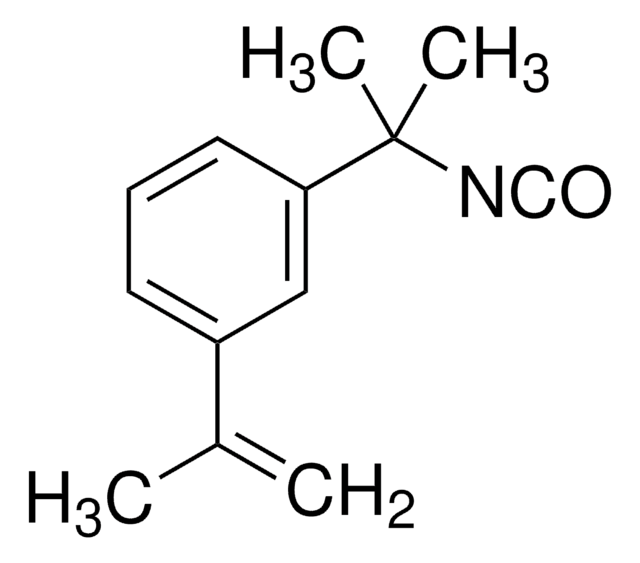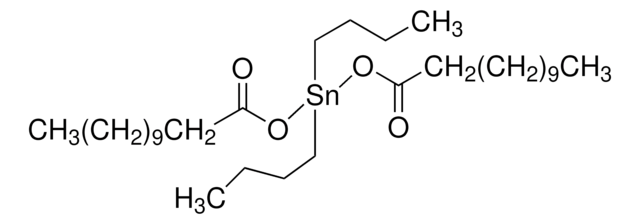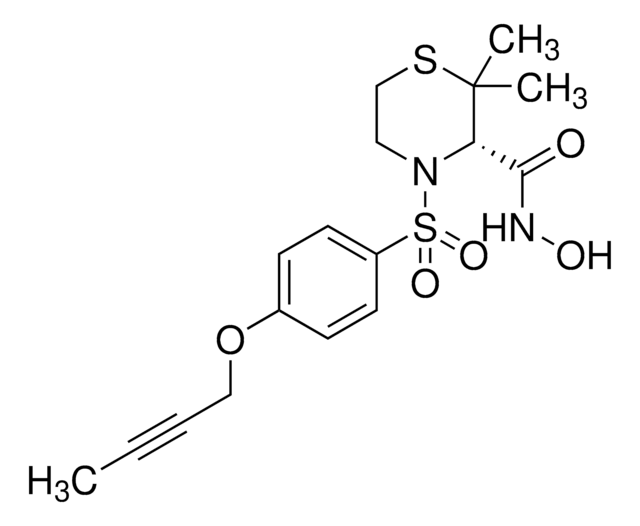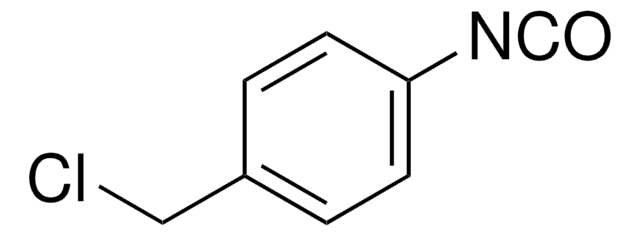477060
2-Isocyanatoethyl methacrylate
contains ≤0.1% BHT as inhibitor, 98%
Synonym(s):
2-(Methacryloyloxy)ethyl isocyanate, IEM
About This Item
Recommended Products
Quality Level
Assay
98%
contains
≤0.1% BHT as inhibitor
refractive index
n20/D 1.45 (lit.)
bp
211 °C (lit.)
mp
−45 °C (lit.)
density
1.098 g/mL at 25 °C (lit.)
storage temp.
2-8°C
SMILES string
CC(=C)C(=O)OCCN=C=O
InChI
1S/C7H9NO3/c1-6(2)7(10)11-4-3-8-5-9/h1,3-4H2,2H3
InChI key
RBQRWNWVPQDTJJ-UHFFFAOYSA-N
Looking for similar products? Visit Product Comparison Guide
Related Categories
General description
Application
- A reactive monomer in the synthesis of poly(methyl urethane) acrylate oligomer for UV-curable coatings. By incorporating urethane and acrylate groups into the polymer, it enables the polymer to be utilized in UV-curable coatings, inks, and adhesives.
- An additive in propylene carbonate-based electrolyte to enhance its properties, such as viscosity, conductivity, and stability. This improves the overall performance of the electrolyte and the battery.
- As a modifier in the copolymerization process to prepare a bioprosthetic heart valve, which is used in the application of transcatheter aortic valve replacement.
- A latent cross-linker for adhesive resins and coatings.
Signal Word
Danger
Hazard Statements
Precautionary Statements
Hazard Classifications
Acute Tox. 1 Inhalation - Acute Tox. 4 Oral - Eye Dam. 1 - Resp. Sens. 1 - Skin Irrit. 2 - Skin Sens. 1
Storage Class Code
6.1A - Combustible acute toxic Cat. 1 and 2 / very toxic hazardous materials
WGK
WGK 3
Flash Point(F)
210.2 °F - closed cup
Flash Point(C)
99 °C - closed cup
Choose from one of the most recent versions:
Already Own This Product?
Find documentation for the products that you have recently purchased in the Document Library.
Customers Also Viewed
Global Trade Item Number
| SKU | GTIN |
|---|---|
| 477060-50ML | 4061837401282 |
| 477060-1KG | |
| 477060-500G | |
| 477060-5ML | 4061832372846 |
Our team of scientists has experience in all areas of research including Life Science, Material Science, Chemical Synthesis, Chromatography, Analytical and many others.
Contact Technical Service













